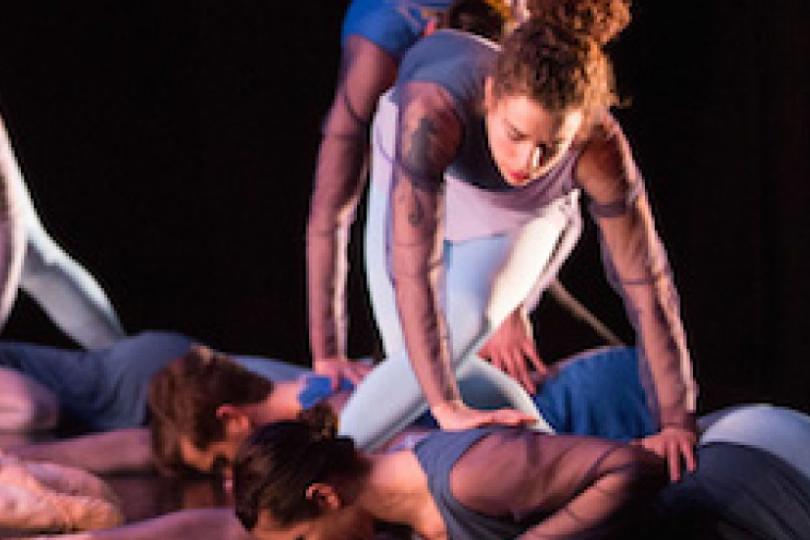Fringe blog (day 6): Traffic, tourist traps, and other horrors
Editorial

I had an agenda all laid out. I was going to devote my Tuesday at Fringe to exploring various facets of theatrical horror. I pulled up to my kid's school to pick him up for an eagerly anticipated father-son outing to DREAMS OF THE RAREBIT FIEND. Heaven knows why, but my descriptions of the surreal turn-of-the-20th-Century comic strip from which the show is adapted had the boy amped up to delve into some live-action nightmares.
Forty minutes later the performers were taking the stage at the Music Box, the boy and I were still sitting motionless in a traffic jam, and I'd pulled off a trifecta of personal horrors: disappointing my son, botching a writing assignment and getting stuck in interstate traffic. So my apologies to Dreams of the Rarebit Fiend, but my examination of horror would have to start elsewhere. (It may be worth noting that my attempt to see the same show during its April run at Bryant-Lake Bowl was derailed due to an unseasonable blizzard, so perhaps I'm simply fated never to catch it.)
That brought me to the 7 p.m. slot and the most overt horror entry on the day's docket, Tim Uren's TOURIST TRAP. This show was more or less the focal point of my evening's agenda. I dig Uren's dedication to translating horror to the stage, as I think it's one of the trickier tasks a theatrical director can tackle. Tourist Trap didn't disappoint.
The story of two couples traveling to a remote South Dakota shrine to a Frontier-era serial killer/cult leader/cannibal is appropriately claustrophobic and surprisingly graphic. It also puts to rest one of my concerns with stage horror: that the technical and special effects limitations of live theater mean it'll never be able to match its cinematic counterparts. On the contrary, Tourist Trap's torture sequences are all the more difficult to watch because they're being played out right in front of you, without the comforting remove of the silver screen for protection. Even when you're acutely aware that you're looking at stage blood, the immediacy of live theater makes the experience intensely uncomfortable. Between this and the literal buckets of blood that slathered the stage in the Twin Cities Horror Festival's exceptional Hear No Evil, I'm actually starting to think theatrical gore is the more effective of the two.
My only real knock against Tourist Trap is that it felt a bit hamstrung by the time constraints of Fringe. I would have gladly watched another 15 or 20 minutes if that meant the characters got fleshed out and made me care a little more about their ultimate fates. As it stands, only Charles Hubbell's creepy curator has enough room to make a lasting impression, although Ariel Leaf does nice work with a difficult part that could easily have come off silly had she overplayed it any further.
The 8:30 slot presented me with a horror conundrum. (Actually, Tuesday was surprisingly fertile ground for creepy theater all around - I would have loved to squeeze in EDGAR ALLAN too, but it was slated against Tourist Trap.) On the one hand, I had the zom-com THE DEATH OF BRIAN: A ZOMBIE ODYSSEY. On the other, I had ROCK BOTTOM, not explicitly a horror play but one whose reviews repeatedly cited the "shock" and "violence" of its finale. I burned out on zombies around the time they started launching their own pub crawls, so I went with the latter.
That might not have been my best move, horror-wise. Rock Bottom is essentially a talky kitchen sink drama that leans heavily on Chekhov's claw hammer (I don't think that counts as a spoiler for a play whose poster art is a blood-spattered hammer). It's well-acted—particularly by LeRoi James, whose commanding stage presence matches his imposing physical stature, and it builds some legitimate tension along the way, but the script never pushes the action beyond fairly predictable scenarios. The violence of the final moments is as brutal as advertised, but it doesn't have much to hang its hat on and thus falls flat.
I knew going into my 10 p.m. show that it wouldn't be horror in any traditional sense, yet it was still my most anticipated performance of the evening. Threads Dance Project blew my mind at last year's Fringe with A Woman’s Work, a gorgeous, haunting dance piece that included one of the most indelibly unsettling images I've seen onstage—two prone dancers writhing jerkily across the floor in a simulation of emotional agony.
Considering this year's TAPESTRIES 0.5 dealt in part with American slavery and its aftermath, I figured it was a safe bet that the company would again dig into some frightening corners of dance. I was right.
The first half of the production was an exhilarating blend of exuberance and melancholy, set to an impeccably selected pop soundtrack and danced by an all-female troupe incorporating an array of ethnicities and body types. The true highlight, though, was the second act, an excerpt from Threads' forthcoming work The Secrets of Slave Songs.
All the fictional torture in the world can't hold a candle to the horror of four black dancers who have previously glided effortlessly across the stage, now bound and shuffling under the weight of invisible chains.
The apex of Tapestries finds four dancers straddling chairs and acting out the lyrics to Nina Simone's staggering racial identity ballad "Four Women" (one of the greatest songs ever put to record, in my estimation). As the dancers channeled the stories of black women being forced into servitude, rape, prostitution and finally revolution, I was left gasping for breath and on the verge of tears at the horrific beauty of it all. I can't ask much more than that from a night at the theater.
Bonus reviews
I felt bad that I whiffed on my attempt to review Rarebit Fiend, so I thought I'd compensate with brief write-ups of a couple of Fringe shows I saw last weekend that also happen to have played Tuesday night. My son pushed hard to go see THE ADVENTURES OF TAPMAN because he digs superheroes battling super villains. Unfortunately, this show was choppy, confusing and far heavier on the tapdancing than the superheroing. If nothing else, I learned how much tap is too much tap for my family (answer: not much). But hey, even with all of his bored squirming during the show, my son was practicing tap moves in his Chuck Taylors on the way to school this morning, so maybe Tapman achieved his mission after all.
And finally there was (IN)HUMANITY: A STUDY THROUGH MOVEMENT, a performance I'd seen praised for making modern dance more accessible. It certainly does that—as the performers act out the narration of an old nature documentary about the social structure of a group of primates, it's hard to imagine anyone being able to claim they "didn't get it." Sometimes that accessibility works against the production. At times I found myself thinking, "OK, I get the parallels between man and ape. What else you got?" But ultimately the consistency of characterization, the stirring original music and the impressively staged set pieces—especially a wrenching "funeral" sequence—won me over.
Plus one of the dancers gave me an orange, and who doesn't like an orange at the end of the night?




